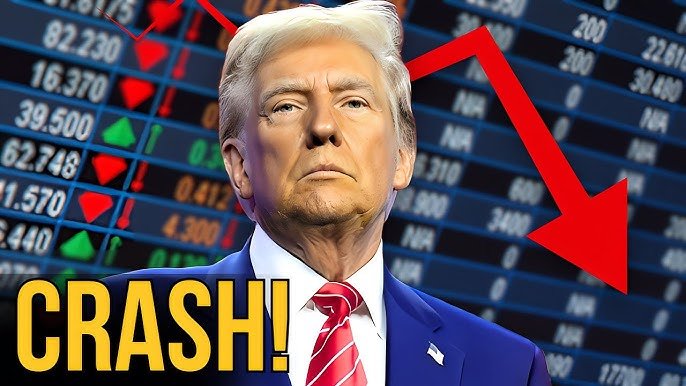A Fractured Global Economy Meets a New Trade Flashpoint
The recent imposition of sweeping U.S. import tariffs has reignited tensions in the global trading system, triggering significant financial market turbulence and exacerbating uncertainty for multinational firms and policymakers alike. On April 7, 2025, President Donald Trump announced a uniform 10% tariff on a broad spectrum of goods from key trading partners—most notably China, India, and the European Union.
This move—framed domestically as a strategy for economic recalibration—has swiftly destabilized global markets, wiping out trillions in equity value and raising the specter of retaliatory trade measures. In an already fragmented geopolitical and economic landscape, this development may represent a tipping point toward a new, more protectionist global order.
Financial Markets React: Rapid Deterioration of Investor Confidence
The tariff policy sent immediate shockwaves across global markets, particularly in the United States:
- The Dow Jones Industrial Average fell 2.3%.
- The S&P 500 declined 2.1%.
- The Nasdaq Composite dropped 2.5%.
Market capitalization losses exceeded $5 trillion globally within days. President Trump’s assertive rhetoric—emphasizing short-term sacrifice for long-term sovereignty—only deepened the perception of policy unpredictability, prompting a risk-off sentiment among institutional investors.
India in Focus: A Strategic Partner Under Pressure
India, one of the world’s fastest-growing economies and a crucial node in global services and manufacturing supply chains, experienced acute financial disruption:
- The Sensex plummeted by 2,500 points.
- The Nifty 50 fell below 21,000.
- Investor wealth contracted by ₹19 lakh crore (~$230 billion).
Currency markets reflected these concerns, with the rupee weakening significantly, amplifying inflationary risks and potential fiscal challenges. For a country aiming to position itself as a viable China alternative in global supply chains, the current turmoil is both economically and diplomatically consequential.
Asia’s Interlinked Exposure: Semiconductor and Export Markets Suffer
The tariff shock has had a cascading effect on Asia-Pacific financial systems, especially those tightly coupled to global export demand:
- Japan’s Nikkei 225 posted a weekly decline of 9%, the largest since March 2020.
- Hong Kong’s Hang Seng fell 13.2%, driven by concerns over export dependency.
- Taiwan’s TAIEX slid 9.7%, largely due to tech-sector volatility.
- South Korea’s Kospi and Australia’s ASX 200 also recorded sharp losses.
The region’s response has ranged from central bank interventions to capital flow management measures, but systemic vulnerabilities—particularly around supply chains—remain unresolved.
Europe’s Dilemma: Retaliation vs. Restraint
In Europe, equity markets also contracted sharply as exporters, especially in the automotive and machinery sectors, faced renewed uncertainty:
- Germany’s DAX fell 6%.
- France’s CAC 40 and Italy’s FTSE MIB posted multi-point losses.
- The UK’s FTSE 100 dropped 6%, reflecting broad-based investor pessimism.
European policymakers now face a critical juncture: retaliate with countermeasures or pursue a coordinated diplomatic response to de-escalate trade tensions without undermining domestic industry competitiveness.
Middle East Stability: Energy Markets Shield GCC Economies—for Now
In contrast, Middle Eastern markets—particularly in the Gulf—have displayed notable resilience. Saudi Arabia’s TASI index advanced modestly, supported by robust energy revenues, fiscal surpluses, and minimal direct exposure to U.S. tariffs. The broader GCC region, benefiting from long-term economic diversification strategies, has remained largely insulated from first-order impacts, although secondary risks remain should global energy demand soften.
Flight to Safety: Gold Rallies, Bond Yields Retreat
Global investors have sought refuge in traditional safe-haven assets:
- Gold surged toward $2,300 per ounce.
- U.S. Treasury yields declined to below 4%, reflecting heightened demand for low-risk assets.
- Oil markets saw Brent and WTI contracts dip on global demand fears.
- Cryptocurrencies experienced divergent trends, reflecting speculative repositioning.
The asset reallocation underscores the severity of the current uncertainty and the lack of confidence in near-term global economic coordination.
Structural Economic Risks: Toward a Slower, More Fragmented Global Economy
The broader macroeconomic implications extend far beyond stock indices. The reintroduction of protectionist trade measures carries profound long-term risks:
- Supply Chain Fragility: New tariffs threaten the viability of globally integrated production systems.
- Stagflation Threats: Elevated prices and suppressed demand may revive stagflation scenarios in developed economies.
- Emerging Market Strain: Capital outflows, weakening currencies, and rising input costs may pressure fiscal policy in lower-income nations.
With monetary policy space constrained and political will fractured, coordinated stimulus responses—akin to those seen in the aftermath of COVID-19—appear less likely.
Strategic Implications: Redefining Globalization for the Post-Tariff Era
The re-emergence of tariffs at the heart of U.S. trade strategy signals a shift from multilateral cooperation to transactional nationalism. This development has far-reaching implications:
- Multinationals may accelerate reshoring and nearshoring strategies, favoring regional supply chains.
- Emerging economies will need to reorient toward South-South trade and domestic consumption as buffers against external shocks.
- Global institutions—from the WTO to the IMF—face renewed pressure to restore trust in multilateralism and provide frameworks for dispute resolution.
A Critical Moment for Policymakers and Executives Alike
This inflection point presents both a challenge and an opportunity. For policymakers, the imperative is clear: prevent an uncontained escalation into a full-blown trade war, while defending national interests and economic stability. For global business leaders, the moment demands agility, scenario planning, and investment in resilience.
In the face of rising geopolitical and economic fragmentation, the path forward will be shaped not by economic fundamentals alone, but by the strategic choices of states, institutions, and firms navigating a dramatically reshaped global landscape.

